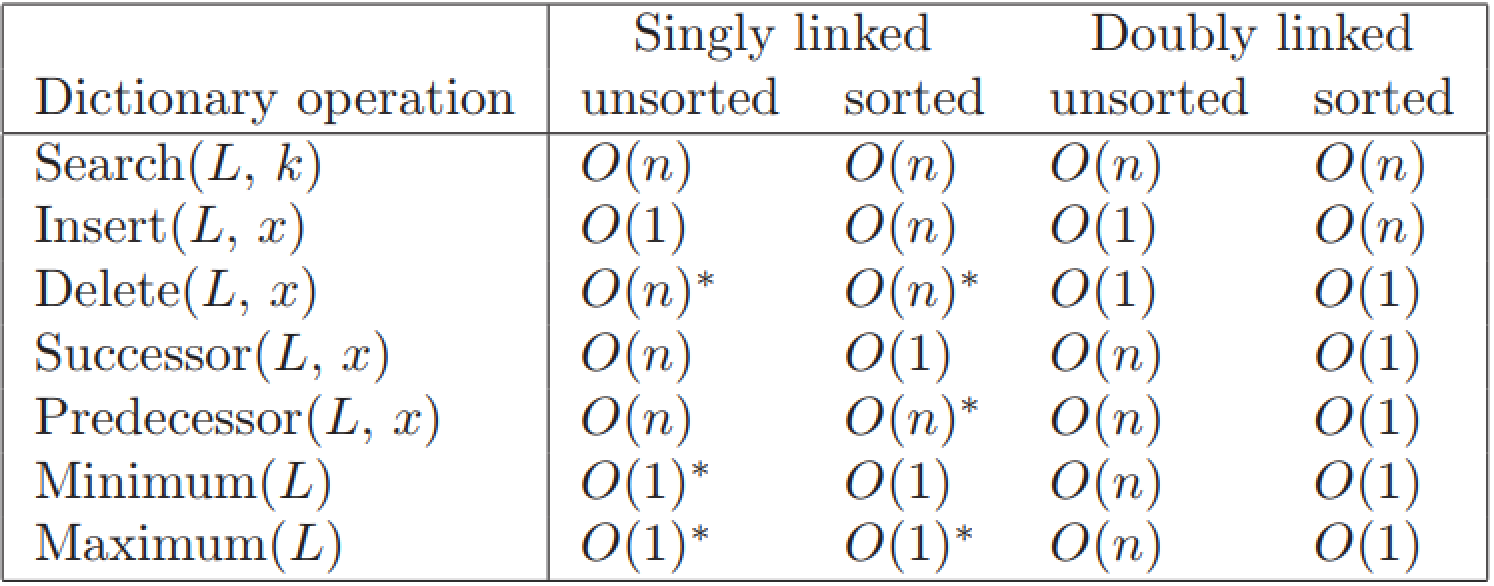Linked Lists
Page content
-
A sequence of nodes
- Singly-linked list
- Each node points to the next node
- Doubly linked list
- Each node points to both the next and previous nodes
- Singly-linked list
-
Unlike an array, access to a particular index is not with a constant time.
- If you access the Kth element, you iterate through K elements.
-
You can add and remove items from the beginning in constant time.
-
Linked lists differ from lists in the way that they store elements in memory.
-
Lists perform better than linked lists for searching an element.
- list: O(1) if you know which element you want to access. Otherwise, O(n).
- linked list: O(n) because you need to traverse the whole list to find the element.
-
While lists use a contiguous memory block to store references to their data, linked lists store references as part of their elements.
-
Each element is called a
node. Every node has two fields:datacontains the value to be stored in the node.nextcontains a reference to the next node on the list.
-
A linked list is a collection of nodes.
-
The first node is called the
head. -
The last node’s next is
None. -
The memory usage of both lists and linked lists is very similar.
-
to add an element:
insert(): at a specific positionappend(): at the end
-
to remove an element:
remove(): from a specific positionpop(): from the end
Implementing Your Own Linked List
class LinkedList:
def __init__(self):
self.head = None
def reverse(self):
current = self.head
prev = None
while current:
next = current.next
current.next = prev
prev = current
current = next
self.head = prev
def printList(self):
temp = self.head
while temp:
print(temp.data)
temp = temp.next
class Node:
def __init__(self, data, next):
self.data = data
self.next = None
ll = LinkedList()
firstNode = Node(10)
secondNode = Node(20)
thirdNode = Node(30)
fourthNode = Node(40)
ll.head = firstNode
firstNode.next = secondNode
secondNode.next = thirdNode
thirdNode.next = fourthNode
ll.printList()

lenis anO(1)because in your RAM, lists are stored as tables (series of contiguous addresses). To know when the table stops the computer needs two things: length and start point. That is whylen()is anO(1), the computer stores the value, so it just needs to look it up.